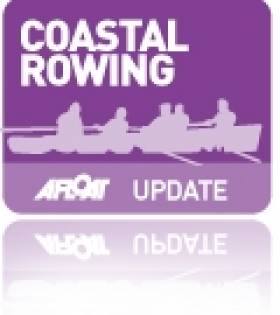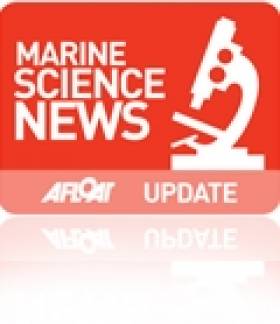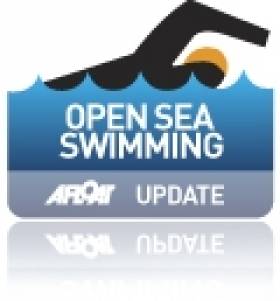Displaying items by tag: Coastal
NatGeo Readers' Most Impressive Photos Of Ireland
#Photos - National Geographic has compiled a gallery of some of its readers impressive photographs of Ireland's world-renowned scenery, with coastal and inland waterfront shots making up the bulk of the collection.
From the rough and tumble of surf-lashed Kinard to the tranquil still waters of Killarney National Park, the welcoming wildlife of Donegal Bay and so much more between, the wealth of vistas on our little island is truly astounding.
Erosion And Harmful Fishing Pose Double Threat To Ireland's Coastline
#Coasts - Increasing coastal erosion and weathering will soon force Ireland to make hard decisions about what parts of the coastline are too expensive to protect, according to a university professor.
As The Irish Times reports, Prof Robert Devoy of University College Cork says that with erosion rates threatening to jump far beyond the current average of up to 1 metre a year, Ireland's coastal counties would have to look "very clinically" at what parts are most worth concentrating their engineering efforts - expensive measures that simply cannot be afforded for all coastal areas.
The senior lecturer in the UCC Department of Geography says: "We need to assess which bits of the coast are most vulnerable to flooding and erosion and which bits of coast from a heritage viewpoint are important to retain and protect."
This sobering warning comes after Lorna Siggins' commentary on the state of Ireland's coastal marine environment, as six new marine protected areas are set to be enacted in law.
The six sites around the coast earmarked for designation as Special Areas of Conservation were proposed by Heritage Minister Jimmy Deenihan more than a year ago
But as Siggins states: "There’s turbulence ahead, if the State’s approach to fulfilling the habitats directive on land is anything to go by."
Aside from the "inconsistencies, poor communication and lack of stakeholder engagement" of the likes that have undermined bog conservation efforts, there's also the "survival of the fittest" attitude among the fishing fleet engendered by uneven implementation of the Common Fisheries Policy to contend with.
And according to Siggins, even the reformed CFP spearheaded by Marine Minister Simon Coveney will do "little to protect sensitive spawning grounds".
The Irish Times has much more on the story HERE.
Awards Presented For Best Irish Coastal Photography
#Photos - Amateur snapper Carl Cutland has collected a top photography award for his image of children enjoying this year's surprise sunny summer on Galway Bay.
As the Irish Independent reports, Cutland's 'Diving Fun' took the lead in the 'People and the Coast' category in the Clean Coasts Photography Competition.
The contest is part of An Taisce's Clean Coasts programme to get communities involved in caring for Ireland's coastal areas.
And according to the organisers, entries spanned the whole coastline of the island of Ireland, capturing moments the year round.
Other prize-winning entries included this stunning shot by Jakub Walutek of Astrid, the ill-fated tall ship that ran around on the Cork coast this summer:
In other photography news, the Irish Air Corps recently published images that perfectly capture the rugged beauty of the Skellig Islands.
According to TheJournal.ie, they were taken by Sgt Damian Faulkner while on a routine maritime patrol in Kerry earlier this month.
Courtmacsherry Crowned Coastal Rowing Champions
#AllIrelandCoastal: Courtmacsherry were deemed Simply the Best as they won the big one, the senior men’s title, at the All-Ireland Coastal Rowing Championships at Carnlough in Co Antrim today. Ring took second place. The senior ladies title was retained by Cairndhu, with Ring again second.
All-Ireland Coastal Rowing Championships, Carnlough, Co Antrim (Selected Results)
Men
Senior: 1 Courtmacsherry, 2 Ring, 3 Kilmacsimon
Intermediate: 1 Passage West, 2 Arklow, 3 Carnlough
Junior: 1 Workmens, 2 Cairndhu, 3 Ring
Under-21: Courtmacsherry
Open Classic: 1 Castletownbere, 2 Cairndhu, 3 Carnlough A
Cork Yawl: 1 Whitegate, 2 Passage West, 3 Rushbrook.
Heritage: 1 St Patrick’s A, 2 St Patrick’s B, 3 St Michael’s
Masters: 1 Passage West, 2 Whitegate
Pre Vet: Courtmacsherry.
Veteran: 1 Portmagee, 2 Passagewest
Under-16: Passage West
Women
Senior: 1 Cairndhu, 2 Ring, 3 Kilmacsimon
Fisa Doubles: Arklow. Fisa Singles: 1 Arklow A , 2 Cairndhu, 3 Arklow B.
Open Classic: 1 Cairndhu, 2 Castletownbere, 3 Carnlough A.
Intermediate: 1 Cairndhu, 2 Portmagee, 3 East Ferry
Cork Yawl: 1 East Ferry, 2 Passage West, 3 Whitegate
Heritage: 1 Killurin, 2 St Kerin’s, 3 St Michael’s
Under-21: 1 Ring, 2 Portmagee, 3 Galley Flash
Under-18: Portmagee
Junior: 1 Courtmacsherry, 2 Templenoe, 3 Arklow
Masters: 1 Galley Flash, 2 Kilmacsimon, 3 Rushbrooke
Pre Vet: Cairndhu A
Mixed
Senior: Fossa
Vet: Cairndhu
Coastal Rowers Converge on Carnlough for All-Ireland
#AllIrelandCoastal: The All-Ireland Coastal Rowing Championships have drawn an entry of 361 crews from 35 clubs (equivalent to 1800 rowers competing) to Carnlough in County Antrim this weekend. Competition begins today and runs through to Sunday. The organisers hope to have live webcam coverage on livestream
Friday Race Order – Start Time 4pm.
1. Open Classic Men
2. Open Classic Ladies
3. FISA X2 Men
4. FISA X1 Ladies
5. Cork Yawl Men
6. Cork Yawl Ladies
7. FISA X2 Ladies
8. FISA X1 Men
Saturday Race Order – Start Time 9am.
1. Mixed Vets – Heat 1
2. Mixed Vets – Heat 2
3. U12 Girls – Final
4. U21 Ladies – Final
5. Senior Mixed – Heat 1
6. Senior Mixed – Heat 2
7. U16's – Heat 1
8. U16's – Heat 2
9. U14 Girls – Heat 1
10. U14 Girls – Heat 2
11. Masters Ladies & Masters Men – Final
12. Heritage Ladies – Final
13. Heritage Men – Final
14. U18's – Heat 1
15. U18's – Heat 2
16. U16 Ladies – Heat 1
17. U16 Ladies – Heat 2
18. Vet Ladies – Heat 1
19. Vet Ladies – Heat 2
20. U14's – Heat 1
21. U14's – Heat 2
22. Junior Ladies – Heat 1
23. Junior Ladies – Heat 2
24. Intermediate Men – Heat 1
25. Intermediate Men – Heat 2
26. Senior Men – Heat 1
27. Senior Men – Heat 2
Sunday Race Order – Start Time 9am.
1. Vet Men
2. Senior Mixed
3. U12's
4. Pre-Vet Mixed
5. U18's
6. Vet Ladies
7. U16 Girls
8. U14's
9. Pre-Vet Men
10. U18 Ladies
11. Mixed Vets
12. U21's
13. Pre-Vet Ladies
14. U14 Girls
15. U16's
16. Intermediate Ladies
17. Junior Ladies
18. Senior Ladies
19. Intermediate Men
20. Junior Men
21. Senior Men.
35 clubs, 361 crews which equals 1800 rowers participating.
# COASTAL ROWING: The univsersities celebrated as the oldest rowing rivals will celebrate the oldest traditional regatta when crews drawn from Oxford and Cambridge alumni compete at Killarney Rowing Festival on Lough Lein on July 28th. The boat used will be the Killarney Six, a wooden boat with a fixed seat which was originally designed and built by Salters in Oxford. The event is part of ‘The Gathering’ and Queen Victoria’s stay in Killarney in 1861 will be marked. The Killarney Regatta itself is set for June 30th.
Live Online Updates From Irish Weather Buoy Network
#MarineInstitute - Keep track on the status of Ireland's coastal waters thanks to the Marine Institute's website, which features live updates from the Irish Marine Weather Buoy Network.
The network is a joint project designed to improve weather forecasts and safety at sea around Ireland. The buoy network provides vital data for weather forecasts, shipping bulletins, gale and swell warnings as well as data for general public information and research.
Data recorded by the six buoys dotted around Ireland's coastal waters, both offshore and far offshore, includes stats on atmospheric pressure, wind speed and direction, wave height and even salinity levels.
The project is the result of successful collaboration between the Marine Institute, the Department of Transport, Met Éireann and the UK Met Office.
Met Éireann Issues 'Yellow' Alert As Strong Gales Sweep Coast
#Weather - Met Éireann has issued a 'yellow' weather alert for coastal areas around Ireland today (4 February) as winds are expected to reach speeds of up to 110km/h.
Westerly winds will continue to reach gale force or strong gale force this evening and tonight on all Irish coastal waters and on the Irish Sea.
Severe gusts of 90 to 110 km/h are predicted for Connacht, Donegal and in coastal areas of Munster. Elsewhere winds will gust between 80 and 90 km/hr.
After dark, showers will become increasingly wintry with the possibility of snow and even blizzard-like conditions, especially in the north and west on high ground.
But meteorologists say that any lying snow will melt during the course of tomorrow morning and afternoon as temperatures rise.
Maritime & Coastal Tourism Plan to Benefit Ireland
#maritimetourism – The Ireland South MEP Sean Kelly says the strategy, due to be published next year, should prioritise sustainable tourism, taking safety and environmental concerns into consideration. Promoting competitiveness, job creation and benefits for local communities are also pivotal in Mr Kelly's view.
"Ireland may not be able to guarantee year-round sunshine but we have some of the best conditions and resources to attract water sports enthusiasts and general holiday-makers in search of beautiful seascapes.
"Ireland needs to focus on boosting the image and profile of our coastal areas as high-quality destinations. Let's concentrate on the unique appeal ofIrelandand increase tourism. The new EU strategy must support Member States like Ireland in its efforts and that means financial support for SMEs involved in tourism and community grants or regionally diversification of the structural funds," Mr Kelly commented.
The European Commission Directorates-General for Maritime Affairs & Fisheries and for Enterprise & Industry have jointly launched a Public Consultation of individuals and stakeholders to better understand the key challenges and opportunities for the maritime and coastal tourism sectors.
Responses will feed into discussions during this year's European Tourism Day, to be held in Brussels, on September 27th and which will include a dedicated focus on coastal and maritime tourism.
Galway Open Sea Swim Launched for Volvo Ocean Race Finale
#openseaswimming – An Open Sea Swim Competition, as part of the Volvo Ocean Race Galway Grand Finale, was launched by Mayor of Galway City Hildegarde Naughton & Corrib Water Polo Club in conjunction with Galway and Shark Swimming Clubs on June 13th2012 in Galway’s Salthill Hotel.
The 5th Annual Open Sea Swim, which goes from Grattan Road Beach to Blackrock Tower, will commence on Saturday 30th June. The swim is part of the many aquatic activities scheduled for the 9 day Volvo Ocean Race Grand Finale festival.
The Corrib Open Sea Swim is the only national qualifying sea swimming event in the west of Ireland and annually attracts hundreds of eager swimmers to the shores of Galway Bay. The swimming races last year were placed in the top five best-attended races last season.
Andrew Flannagan of Corrib Swimming and Water Polo Club commented "on behalf of Corrib Swimming and Waterpolo Cub I'd like to thank all of our sponsors as well as 'Let's do it Galway' for their assistance in organising the swim and we and the other swimming clubs involved hope that sea swimmers of all ages and abilities come along to enjoy the swims."
The Kingfisher Club announced that they will once again sponsor the Corrib Open Sea Swim for men this year. Managing Director of the Kingfisher Group Joe Cosgrove said: ‘The Kingfisher Club is delighted to be associated with an event of this caliber, and wish all the participants the best of luck in the open sea swim’.
The Women’s race will be sponsored by Mc Sharry Brothers Construction Equipment, Ballybrit.
Each race is a distance of 2200 metres on an outgoing tide, either with or against the wind, depending on the climatic conditions of the day. The races will be at 2.30pm (Men) and 3.30pm (women) on the 30th of June 2012 and can be followed and watched by simply walking the promenade in Salthill.
Corrib Water Polo Club are also running two under-age swims this year; at 2.30 pm a ‘junior’ race from ladies beach to Blackrock boat-slip for younger swimmers aged 12-16 who can swim 400m. At 3.30 pm on race-day there will be a novices swim from the ‘first-rock’ to Blackrock boat slip for our youngest swimmers aged 10 – 14 and is about 100m. Full lifeguard cover will be provided.
Prizes are awarded to the first six in each race, the first veteran home (over 50), and a team prize for the first four swimmers home from one club. The fastest
time recorded in each race will be awarded the Fastest Time Trophies. The prize giving ceremony will take place in the Salthill Hotel immediately after the end of the women’s race on the day at about 7.30pm.






































































